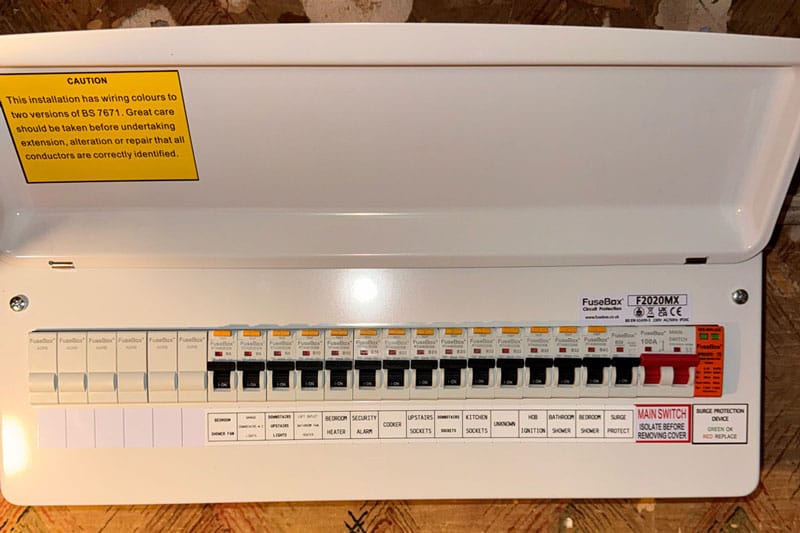What is a Consumer Unit?
Your consumer unit, often still called a fuse box, is the hub of your home’s electrical system. It distributes power around the property and protects you with safety devices that cut off electricity in the event of a fault. Modern consumer units contain RCDs (Residual Current Devices) that switch off instantly if a problem is detected. Older units often lack this protection, leaving your home more vulnerable to shocks and fire risks.
Common Signs You Need an Upgrade
If your consumer unit is showing any of these issues, it’s time to consider an upgrade:
- Rewirable fuses instead of breakers; a sure sign the system is outdated.
- Frequent tripping; if your power cuts out regularly, your system may not be coping with demand.
- No RCD protection; a major safety concern in bathrooms, kitchens, and outdoor circuits.
- Burning smells, buzzing, or scorch marks; warning signs of overheating or serious faults.
Why It Matters in Bristol’s Older Homes
Many properties in Redland, Clifton, and Stoke Bishop are beautiful period houses with equally “period” wiring. These systems weren’t designed for modern living, where homes run on dozens of appliances, gadgets, and even EV chargers. An upgrade ensures your home meets today’s wiring regulations and provides reliable protection for both people and property.
Benefits of Upgrading
- Complies with the latest safety standards.
- Protects against fire and electric shock.
- Reduces nuisance tripping.
- Adds value and reassurance when selling your home.
Lek-Trix carry out consumer unit upgrades across Bristol, including Henleaze, Sneyd Park, and Westbury-on-Trym. To prepare on what to expect during your consumer unit upgrade, read our step-by-step guide.
FAQs
How much does a consumer unit upgrade cost in Bristol?
Most upgrades fall between £600 and £950 +VAT, depending on the size of the property and how much work is required. A small flat in Cotham will usually be towards the lower end, while a large family home in Clifton with older wiring may cost more. Extra remedial work can add to the price if your system needs additional improvements.
How often should a consumer unit be replaced?
There’s no fixed replacement cycle, but consumer units typically last around 20 to 30 years. If yours is showing signs of wear, lacks RCD protection, or trips frequently, it’s worth upgrading sooner. In older Bristol homes, rewiring and unit upgrades often happen together to bring everything up to modern standards.
Do I need a consumer unit upgrade to install EV charging?
In most cases, yes. EV chargers require a significant amount of power, and many older fuse boxes can’t handle the extra load safely. Before fitting an EV charger in areas like Redland or Stoke Bishop, an electrician will check whether your consumer unit needs replacing.
What’s the difference between a fuse box and a consumer unit?
A fuse box is the older version, usually containing rewirable fuses. A consumer unit is the modern equivalent, fitted with circuit breakers and RCDs for instant fault protection. If your home still has a fuse box, upgrading to a consumer unit is strongly recommended to keep your electrics safe.


